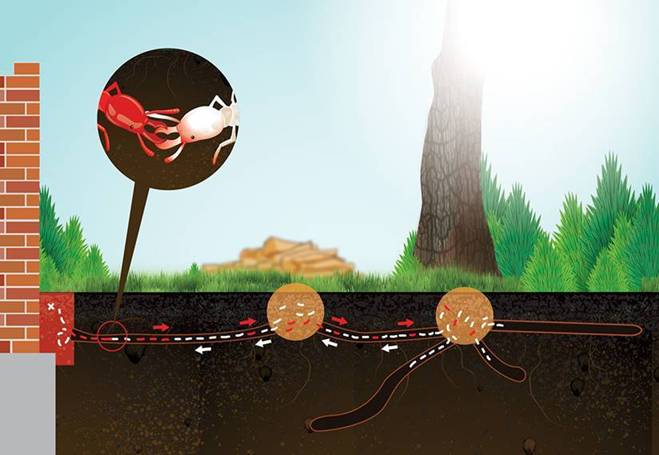What’s Buggin You, the Termite and Pest Specialists is an
Accredited Termidor HE & SC Applicator.
Termidor is the BEST protection barrier against Termites.
Termidor HE comes with 2 Million Dollar Assurance Warranty!




How does it work?
Watch the video below:
If your home contains any structural timber – like a timber frame, timber trusses in the roof, timber flooring or a deck – termites could eat it away until it collapses.
That’s why a relatively small investment in vital protection for your most important asset is so worthwhile. And why you should insist on the best treatment available.
Another key advantage of termites’ inability to detect Termidor is that they carry it back to the nest on their bodies and pass it on to other termites – the devastating Genuine Termidor Transfer Effect.
Termites are social insects that live together in large colonies and feed and groom each other. So termites that have come into contact with Termidor soon pass it on to others. Even those secondarily affected termites can also pass Termidor on through feeding or contact.
Termidor can control whole termite populations faster than any other treatment, but it is relatively slow-acting in individual termites. This means termites have ample time before dying to spread Termidor to their nest, and the entire colony.

Commonly called ‘white ants’, termites are actually more closely related to cockroaches. But they are a much more destructive pest.
There are hundreds of species of termites in Australia, most of which pose no threat to houses and other buildings. But the few species that can cause trouble are responsible for more damage to houses each year than fires, floods or storms
Termites can be grouped into three basic categories: dampwood, drywood and subterranean. Subterranean termites are the main threat to timber in buildings, which makes them a danger to the biggest investment you may ever make – your house.
Even steel-framed houses are not immune from termite attack. The termites can still get in and destroy wooden roof trusses, furniture and wood trim such as architraves. Some species of timber are resistant to termites, but none is entirely ‘termite-proof’.
Termites live on cellulose, which is found in all plant material. Not all termites eat wood, but those that do can come to your home looking for food. They travel through the ground from a nest that may be hundreds of metres away, then they build mud tunnels into your house. They can squeeze through cracks the thickness of a piece of paper.
Homeowners don’t usually know termites are there until substantial damage has been done. They can eat anything made from wood inside the home and even gyprock and plasterboard walls, often leaving just a paper-thin layer of paint. Unfortunately, by this time they are right through the home, no matter how it is constructed.